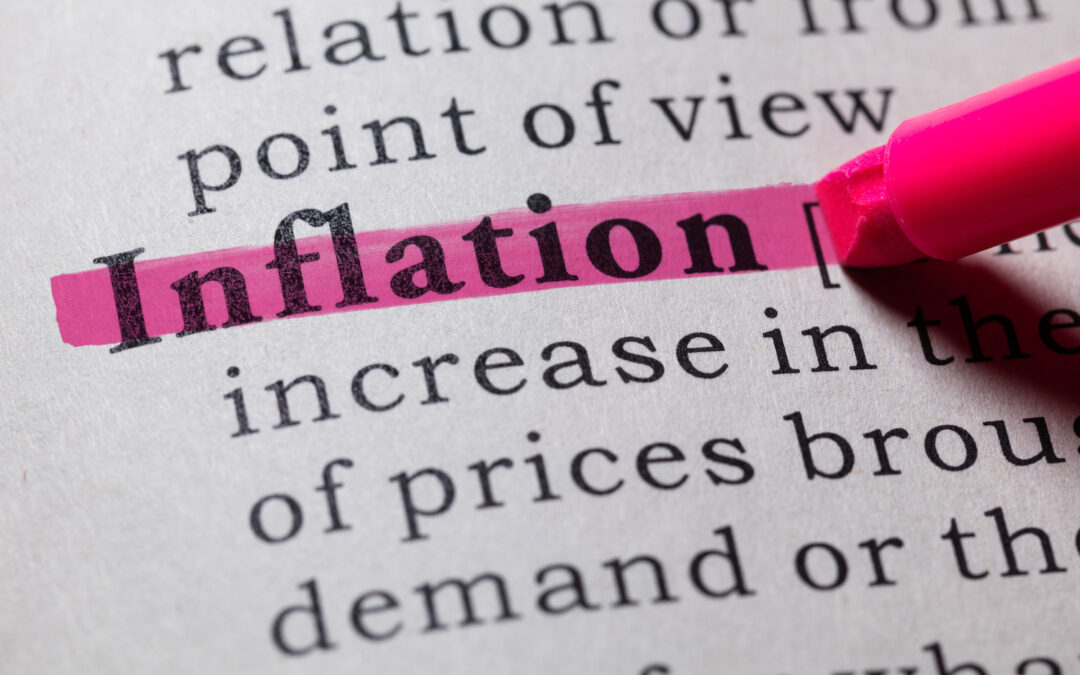Inflation is stickier and higher than expected in the US, according to the September CPI data released last week. The CPI was up 0.4% month-on-month, 8.2% y-o-y with the core CPI excluding food and energy prices up 0.6% m-o-m, 6.6% y-o-y. Rising service prices are offsetting moderating goods prices and US inflation generally is being underpinned by annual wage growth continuing to run above 5% y-o-y. US wage and inflation numbers remain inconsistent with the Federal Reserve achieving a return to 2% target inflation over the next three years at least. They imply that the Fed still has more work to do hiking the Funds Rate from the current 3.25% to probably 4.50% or more.
Australia has the Q3 CPI report out on 26th October and the Q3 wage price index out in mid-November. Both are likely to show higher annual changes than were recorded in Q2 at respectively 6.1% y-o-y and 2.6% y-o-y but still well below the outcomes recorded in the US. Looking beyond to Q4 2022 and 2023, Australia’s inflation and wage growth rates seem set to stay below those in the US. For this reason alone, the RBA will not need to hike the cash rate as much as the US Fed will need to lift the Funds rate.
Returning to the approaching Q3 CPI and wage price index reports, the CPI will show high price increases in areas such as cost of housing construction, housing rent, utility bills, travel and accommodation, and eating out. But there will also be significant offsets in falling food prices during the quarter and lower petrol prices.
The quarterly CPI increase is still likely to be large, around 1.6% q-o-q on our estimate and that would lift the annual CPI increase to around 7.0% y-o-y. Underlying inflation (the combination of the trimmed mean and weighted median measures) looks set to be about the same as in Q2, around 1.5% q-o-q, 5.2% y-o-y. Both headline and underlying annual inflation are tracking more than one percentage point lower than in the US.
Lower wage growth in Australia than in the US provides strong cause to expect Australian inflation to continue to track lower than in the US. In Q2, Australian annual wage growth was half of that in the US. That proportion will grow when Australia’s Q3 wage price index report is released, but not much. Reflecting the 5.2% minimum wage rise from July 1st plus a scattering of wage deals in 3 to 4% range wage price index will lift around 1.1% q-o-q on our estimate taking annual wage growth to 3.1% y-o-y.
Annual wage growth will continue to rise in Q4 and through the first half of 2023 but will cap out probably below 4% y-o-y as two significant changes to labour market conditions come into play. The covid period drought of international workers has ended and numbers entering Australia are increasing. This Key part of labour market supply is improving and will be gathering pace in 2023.
At the same time, economic activity in Australia will moderate in 2023 as the global economy slows and the full impact is felt of higher borrowing interest rates at home. Demand for labour will moderate through 2023.
Australia’s annual inflation rate and annual wage growth sitting a percentage point and more below that in the US in the immediate term and extending beyond in to next year means that the RBA’s peak cash rate should be at least a percentage point lower than in the US. If the Fed’s funds rate peaks in 4.50% to 5.00% territory that implies a peak Australian cash rate around 3.50%.
But it is not just the relative inflation dynamics in Australia and the US that will determine the relative peaks in official interest rates, another important factor is the relative sensitivity of borrowers in the two countries to higher official interest rates. Official interest rate hikes hurt more in Australia than in the US. Australian households are more heavily indebted than US households and Australian household debt is still predominantly floating (variable) rate. Even the part of Australian household debt that is not floating is mostly 2 or 3-year fixed with higher rate resets rolling in to view. US household debt, in contrast, is mostly long-term fixed rate.
The RBA’s cash rate hikes to date will be felt in full by most borrowers by early 2023 and by almost all borrowers by early 2024. The Fed’s rate hikes take much longer to permeate.
Taking to consideration inflation and the different impact of rate hikes in the US and Australia, we see the Fed with two or more big rate hikes ahead taking the Funds rate to 4.50% early in 2023. In Australia, the rapid 5-month rise in the RBA’s cash rate from 0.10% to 2.60% is likely to prove restrictive as the full effect of the increases is felt over the next two or three months. The RBA may still need to lift the cash rate a little further over the next few months, but without evidence of a lurch higher in Australian inflation and wage growth, say Q3 results of respectively nearer 7.5% y-o-y and 3.5% y-o-y, there is no compelling case why the RBA needs to push the cash rate to a peak much above 3%.

